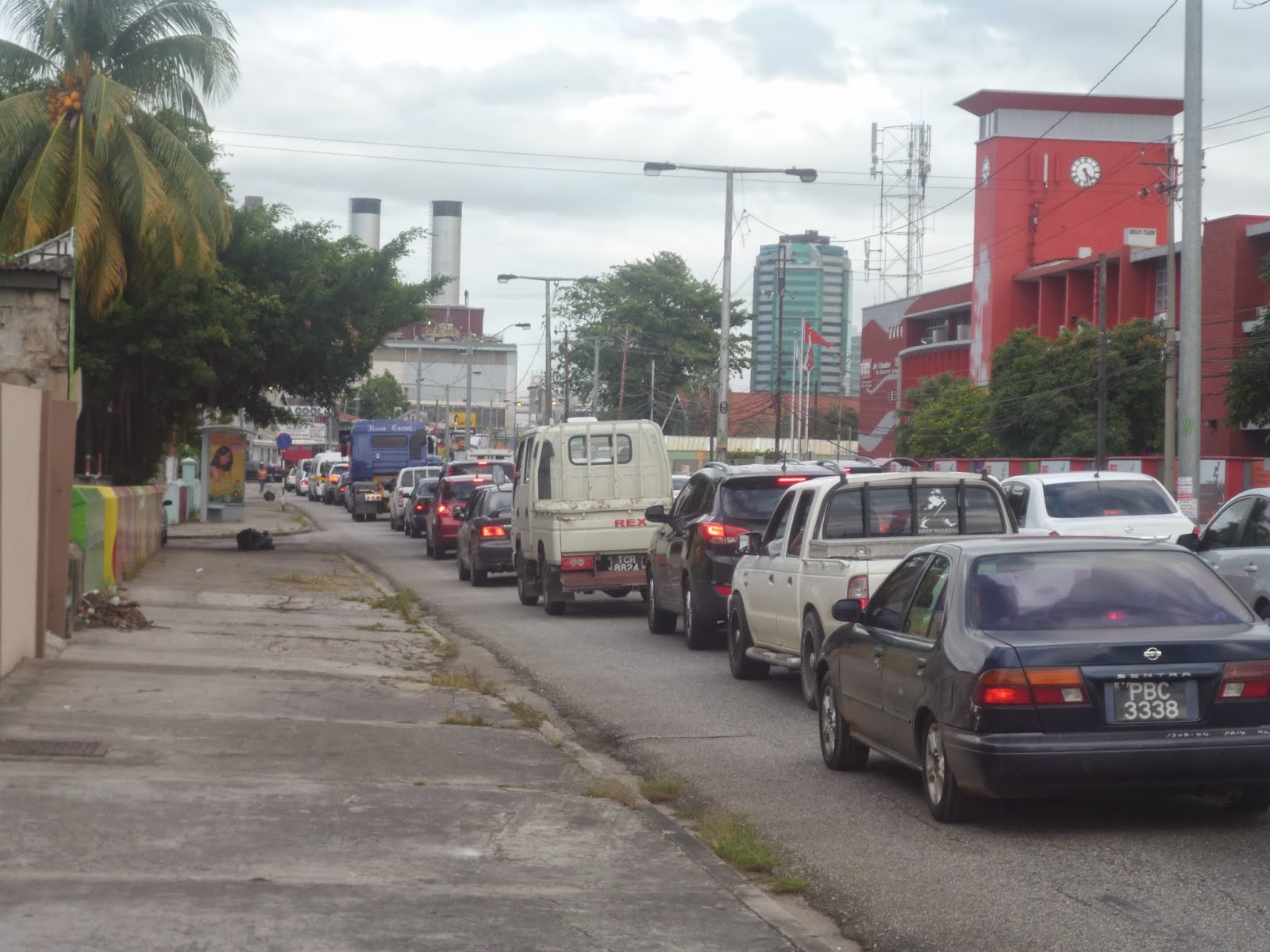“An advanced city is not a
place where the poor move about in cars, rather it’s where even the rich use
public transportation” ― Enrique Penalosa
The above photograph was taken at approximately 4:00 pm on the
east-bound lane of Wrightson Road, Port of Spain i.e. a major transport network used for
heading into or out of the city. For those who utilize this road to exit the
city after work or school on a weekday, this is a regular scene at rush hour –
standstill traffic. In Trinidad, traffic congestion occurs simply due to the
fact that there are too many cars in relation to the limited roads available. This
is mainly due to the fact that several members of a single household own cars
and choose to drive to their destinations individually, rather than carpooling
or traveling via public transportation. As
a result, traffic congestion plagues the city and poses a great problem for us
all.
Traffic congestion does not only affect society by increasing
travel time, but the environment also takes a hit. Increased traffic leads to
greater levels of air pollution as increased amounts of car exhaust comprising
of nitrogen dioxide and particulates are emitted into the atmosphere daily. Subsequently,
these increased carbon emissions exacerbate the phenomena of Global Warming,
while adversely affecting human health by causing a range of respiratory
diseases and cancer. In addition to this, longer travel times through traffic
also increases overall fuel consumption rates. Therefore, greater traffic
congestion correlates to increased exploitation of natural gas i.e. a valuable,
non- renewable natural resource which is one of the driving forces of the economy
of Trinidad and Tobago, and thus, its use must be managed.
Needless to say, it is evident that the government of Trinidad and Tobago is
attempting to manage this traffic congestion problem by developing new
transportation schemes through the widening of existing roads, such as at Four
Roads, as well as the restructuring and development of new roads and flyovers
such as along the Churchill Roosevelt Highway and the Uriah Butler Highway.
However, in often cases, construction using improper planning techniques, such
as the haphazard widening of roads, leads to a temporary ease in congestion
followed by bottlenecking. Thus, this completely misses the aim of easing
traffic congestion. Nevertheless, any improvement to this prominent problem is
better than no improvement at all.
Further Reading:
- Restructuring and development of new roads along the Churchill Roosevelt/Uriah Butler Highway: http://guardian.co.tt/news/2013-10-11/video-how-use-new-churchill-roosevelturiah-butler-highway-interchange
- The effects of traffic fumes: http://www.dailymail.co.uk/health/article-2359148/Traffic-fumes-raise-lung-cancer-risk-say-experts-Air-pollution-added-list-recognised-causes-disease.html
KPMG. "INSIGHT: Urbanization Urbanization,
congestion, energy KPMG GLOBAL." Accessed February 8, 2014.
https://www.kpmg.com/global/en/issuesandinsights/articlespublications/insight-magazine/pages/urbanization-congestion-energy.aspx.
Sussex Air Quality Partnership. "What
causes Air Pollution?" Sussex-air. Accessed February 8, 2014.
http://www.sussex-air.net/PollutionEffects/AQEnvironment/AirPollution.aspx.
Trinidad Express Newspapers. "Simply too
many cars on the nation's roads | Trinidad Express Newspaper | Letters."
Trinidad Express Newspaper. Accessed February 10, 2014.
http://www.trinidadexpress.com/letters/Simply_too_many_cars_on_the_nation_s_roads-170861001.html.
